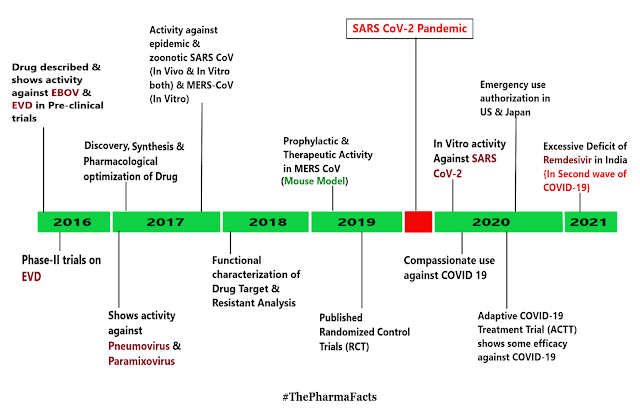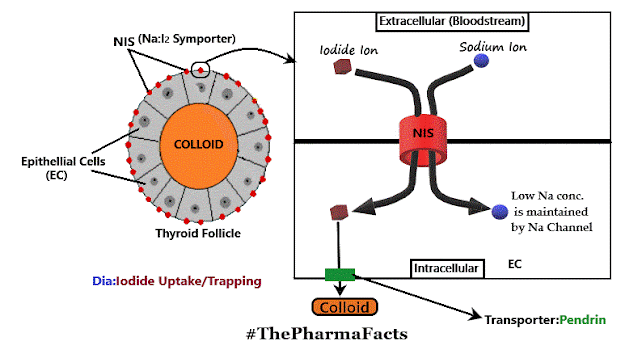TETRACYCLINE : ANTIBIOTICS
TETRACYCLINE
- All are obtained from Actinomycetes species
- They are bitter solids & their hydrochlorides soluble in water
- Derivatives of Octahedro Napthacene (having 4 annulated six-membered rings together)
- Amphoteric compounds (having both acid & base properties)
General Information:
General Structure:
SAR of Tetracyclines:
1.Modification at C1 & C3:
- Keto-enol tautomerism of ring A in C1 & C3 is common feature to all biologically active tetracyclines, blocking this system by forming derivatives like A–C = O at C1 and C3 results in loss of antibacterial activity
- Function of C1 & C3 is essential for activity
2.Modification at C2 position:
- Antibacterial activity depends on the carboxamide (CONH2) moiety.
- Amide is best when left unsubstituted or monosubstitution is acceptable of 'alkylamino methyl amide/Mannich base' (Rolitetracycline)
- Large alkyl group on the carboxamide may alter normal keto-enol equilibrium of the C1, C2 & C3 conjugated systems and diminishes inherent antibacterial activity
- The replacement of carboxamide group or dehydration of carboxamide to the corresponding nitrile results in a loss of activity.
3.Modification at C-4 & C4a position:
- C4: Keto-enolic character of the A-ring is due to the α-C4 dimethyl amino substituent
- C4: Loss of activity is exerted when dimethyl amino group is replaced with hydrazone, oxime or hydroxyl group
- C4: Epimerization makes compound inactive (as shown below)
- C4a: α-hydrogen at C4a position of tetracyclines is necessary for useful antibacterial activity
4.Modification of the C5 & C5a position:
- C5: Alkylation of the C5 hydroxyl group results in loss of activity
- C5: Epimerization is harmful to antibacterial activity (as shown earlier at C4 position)
- C5a: α-hydrogen at C5a position of tetracyclines is necessary for useful antibacterial activity
5.Modification at the C6 position:
- C6 methyl group contributes little to antimicrobial activity thus it is tolerant to variety of substituents
- Majority of tetracyclines have α-methyl group & β-hydroxyl group at this position
- Demeclocycline is a naturally occurring C6 demethylated chlortetracycline with an excellent activity
- Removal of C6 hydroxyl group affords doxycycline, which exerts good antibacterial activity
6.Modification at C7 position:
- Nature of the aromatic D-ring makes C7 liable to electrophilic substitution. Substitution with electron withdrawing group such as nitro(-NO2) & halogen groups are introduced in some C7 tetracyclines, which produces the most potent of all the tetracyclines in vitro, but their are compounds are potentially toxic and carcinogenic
- Substituents like acetoxy, azido, and hydroxyl groups reduces antibacterial activity
7.Modification at C10 position:
- C10 phenolic moiety is necessary for antibacterial activity
- C10 substitution with para or ortho substitution with hydrogen group activates the C9 & C7 positions
8.Modification at C11 & C11a position:
- C11 carbonyl moiety is a part of one of the conjugated keto-enol system required for antibacterial activity
- C11a: No stable compounds formed by modifications at this position
9. C-12/12a position:
- Esterification of the hydroxyl group leads to enhanced lipophilicity and it should undergo hydrolysis to leave the active tetracycline with hydroxyl group at 12a position, which is necessary to produce good antibacterial action
- Transport and binding of these drugs depends on keto-enol system
- D-ring needs to be aromatic and the A-ring must be appropriately substituted at each of its carbon atoms for notable activity
- B-ring and the C-ring tolerate certain substituent changes as long as the keto-enol systems (at C-11, 12, 12a) remain intact and conjugated to phenolic D-ring
- D, C, B-ring phenol, keto-enol system is must & A-ring must also contain a conjugated keto-enol system
- Specifically, A-ring contains tricarbonyl derived keto-enol moiety at positions C-1, 2, and -3
- Other structural requirements for good antibacterial activity include basic amine function at C-4 position of the A-ring
- C-4,4a,5,5a,6,12a are potentially chiral carbons depending on substituents
- Oxytetracycline & Doxycycline have 6 chiral carbons since they possess 5-α-hydroxy substituent & rest have 5 chiral carbons







Comments
Post a Comment
If you have any query or If you like the post,Please let me know.